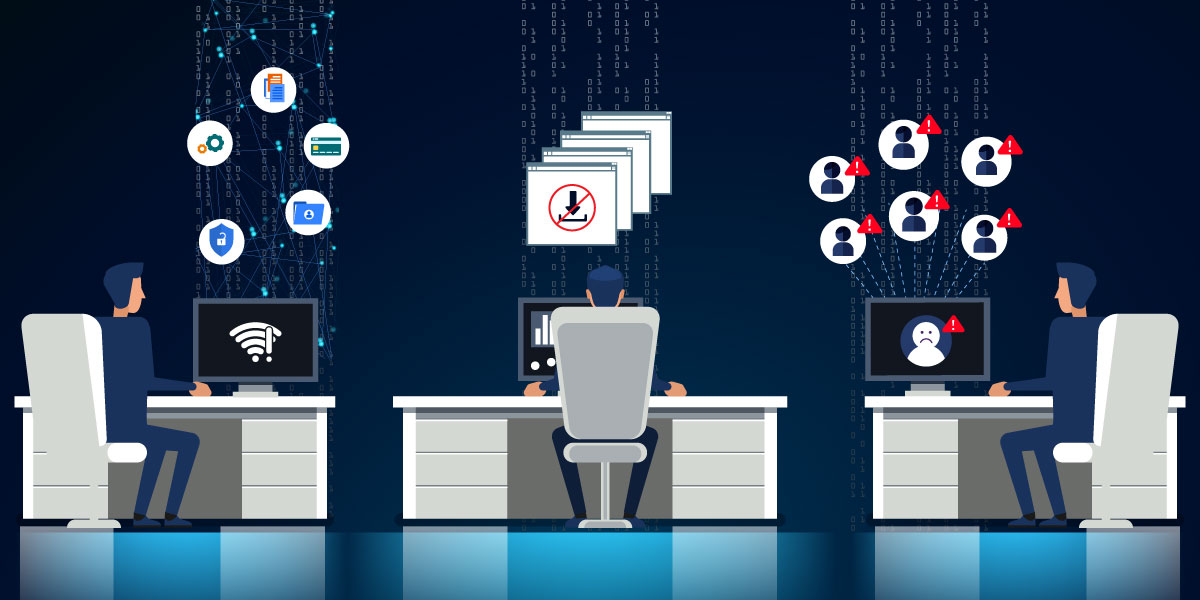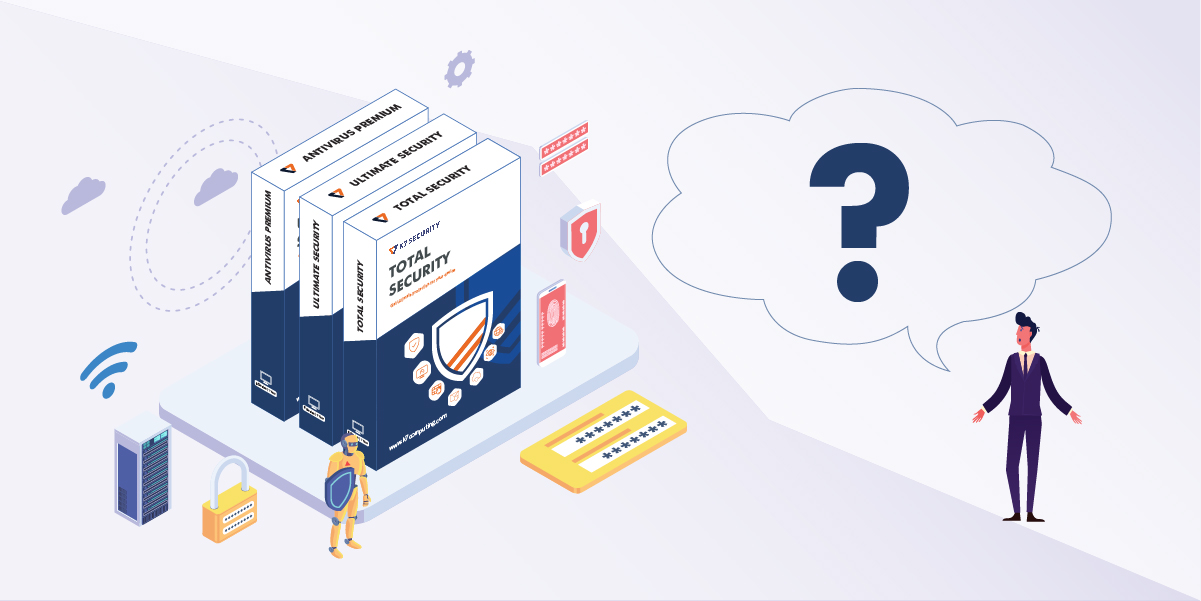Irrespective of the size, every enterprise is responsible for safeguarding the organization’s digital assets since cyber threats are becoming more sophisticated and frequent. In this landscape, responding to attacks after they happen is not enough. We need to catch them early. This is where the proactive nature of Indicators of Attack (IoAs) comes in. Unlike Indicators of Compromise (IoCs), which tell us that a breach has already occurred, IoAs empower us to detect attacks in their early stages, allowing us to prevent potential security incidents before they cause significant harm. So, every enterprise executive must understand and leverage IoAs, which is crucial for the proactive security of your organization.
Types of IoAs: Knowing What to Look For
IoAs come in various forms, each crucial in spotting different types of threats. Here are the primary types you should focus on:
- Behavioral Indicators: These are unusual patterns of behavior that suggest someone is trying to breach the network. For example, repeated failed login attempts or accessing your network at odd hours are red flags.
- Network-Based Indicators: These indicators show suspicious network activities. For instance, unexpected spikes in network traffic or connections to known malicious IP addresses can signal an attack.
- Endpoint Indicators: These are related to suspicious activities on individual devices. Unauthorized software installations or sudden changes in file permissions are examples.
- Log-Based Indicators: By analyzing security logs, we can spot irregular patterns, such as repeated access attempts to sensitive files or unexpected changes in log files.
Read More: Embracing Cybersecurity as a Business Strategy: Transforming Enterprises into Safer and More Efficient Entities
Six Key IoAs You Should Keep an Eye On
To make this concept more precise, let us discuss six key IOAs that are pretty prevalent:
- Repeated Failed Login Attempts: Observing multiple failed login attempts often indicates a brute-force attack. It’s like someone trying to guess the password repeatedly.
- Unusual Access Times: Accessing systems or sensitive data during odd hours is suspicious. If someone logs in at 3 AM, I must check if it’s legitimate.
- Unexpected Network Traffic: Sudden spikes in network traffic, especially to unknown external sources, can mean data is being stolen. For example, if a server suddenly sends large amounts of data to a foreign IP address, it’s a critical concern.
- Creation of New User Accounts: If new user accounts are created without proper authorization, it could mean an attacker is trying to gain a foothold in the system, significantly if those accounts have elevated privileges.
- Changes in System Files or Configurations: Unexpected modifications to system files or security settings often mean someone is tampering with the system. For example, changes to firewall settings could be an attempt to open new attack paths.
- Suspicious Software Installations: The installation of unknown or unauthorized software is a strong indicator of an attack. Every network administrator should constantly monitor for software changes they didn’t authorize.
Importance of IoAs: Staying Ahead of Threats
IOAs are not just technical jargon but vital tools that keep us ahead of the game. They provide early warnings that allow us to act quickly and prevent significant damage. We can stop data breaches, unauthorized access, and other malicious activities by identifying attacks in their early stages before they escalate.
How IoAs Work: The Popular Methods
Network admins use several methods to identify IoAs, including threat intelligence, behavioral analysis, and advanced monitoring tools. Tools like Intrusion Detection Systems (IDS), Security Information and Event Management (SIEM) systems, and Endpoint Detection and Response (EDR) solutions help them spot and analyze potential threats. These tools continuously monitor suspicious activities and help identify patterns that might indicate an attack.
Read More: Navigating the Deepfake Phishing: Understanding and Combating AI-Enabled Phishing
IoA vs. IoC: Understanding the Difference
It’s crucial to differentiate between Indicators of Attack (IoAs) and Indicators of Compromise (IoCs). This understanding is not just technical knowledge but a key to the defense strategy. While IOAs help detect ongoing attacks, IoCs tell us a system has already been breached. For example, an IoA might be a pattern of failed login attempts, suggesting an active brute force attack. In contrast, an IoC could be a file hash associated with known malware, indicating the system is already compromised. Both are essential, but they serve different purposes in our defense strategy.
Limitations of IoAs: Recognizing the Challenges
Despite their importance, IoAs have limitations. Attackers always find new ways to evade detection, so relying solely on IoAs isn’t enough. Advanced threats, such as polymorphic malware or zero-day attacks, require sophisticated detection techniques like machine learning and behavioral analysis. Hence, integrating IoAs into a broader threat intelligence framework by combining them with advanced detection techniques and tools is recommended. For instance, many large enterprises use machine learning algorithms to analyze network traffic for unusual patterns and employ behavioral analysis tools to detect anomalies in user activities. This integration enhances the detection capabilities and helps us stay ahead of evolving threats.
IoAs Management Best Practices
To manage IoAs effectively, here are the best practices:
- Continuous monitoring of network and endpoint activities should be a cornerstone of your strategy. It ensures we detect IoAs promptly and are always prepared to respond. Using advanced tools and techniques to identify potential threats in real-time is also crucial. This continuous vigilance keeps us ahead of potential threats.
- Behavioral Analysis: It is crucial to incorporate tools that analyze user and entity behavior to detect anomalies. These tools help identify unusual activities that may indicate an attack.
- Threat Intelligence Platforms (TIPs): Gathering and analyzing Information on the latest threats, including IoAs, through platforms, helping enterprises stay updated on emerging attack vectors. For instance, labs.k7computing.com has been doing it for years.
- Incident Response Plan: Developing and maintaining a comprehensive incident response plan is vital. However, updating and testing the plan regularly is equally important to ensure its effectiveness. With cyber threats constantly evolving, an outdated plan may not be sufficient to respond to the latest IoAs. Regular updates and testing ensure the plan is always prepared to respond to IoAs promptly and efficiently.
- Collaboration and Information Sharing: Collaborating with other organizations and sharing threat intelligence is a powerful way to enhance our detection capabilities. Participating in industry forums and information-sharing initiatives provides valuable insights into emerging threats. It makes us part of a larger community working towards a common goal.
- Regular Training and Awareness: Educating employees on recognizing and responding to IoAs is essential. Training on safe computing practices and reporting suspicious activities helps us stay vigilant.
Proactive Cybersecurity
Indicators of Attack play a crucial role in proactively detecting and mitigating cyber threats. By understanding and effectively leveraging IoAs, we can enhance our organization’s security posture and adopt a proactive approach to cybersecurity. Implementing best practices for IoA management and staying updated on the latest threat intelligence will help us stay ahead of cyber threats and protect our critical assets.











